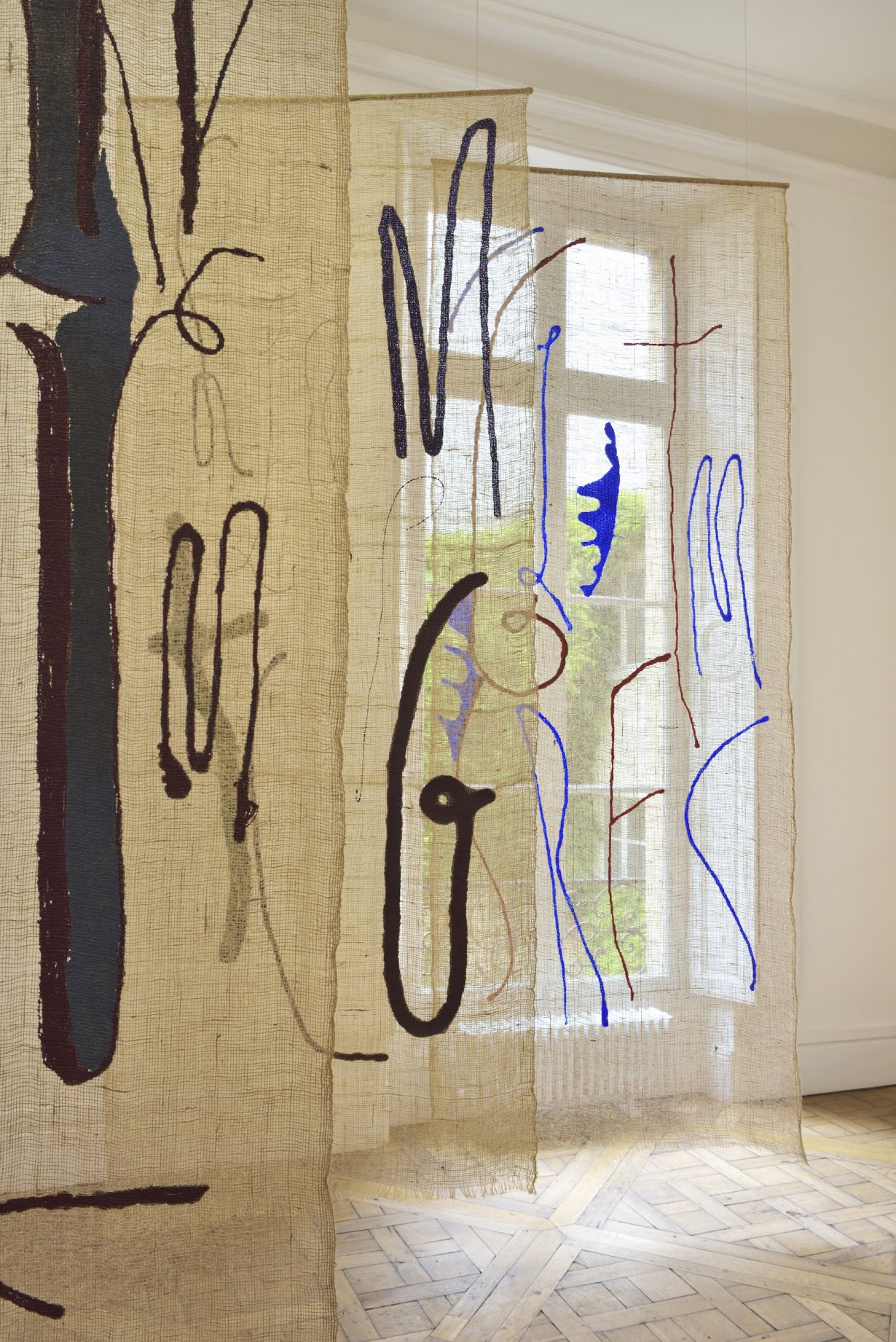The Secret Life of Vowels recalls how language itself is every bit as mutable and mysterious as the world of material and sensory experience

According to a common artworld truism, language, useful as it may be for describing things, pales in comparison to raw, corporeal experience. The real, it is supposed, always evades illumination by the dim light of words. In her debut Paris solo exhibition, however, New York-based painter Rebecca Watson Horn recalls how language itself is every bit as mutable and mysterious as the world of material and sensory experience that it is often deployed to portray.
Executed largely in oil on burlap – with the latter occasionally used to more sculptural ends – Watson’s works send calligraphic bits and pieces tumbling through atmospheres of colour and line. According to the gallery text, each painting began with a sentence or a phrase, first written in paint, and rewrought through intrusions of colour and shape into forms that seem caught in perpetual gestation. In Sigil 78 (2024), deep purple lines, suggesting the letters S, O and B, curve upward over the painting’s surface, clustering along its right edge, and expanding in three places into large blotches recalling infilled cursive loops. Over this, another set of red lines comes in, while scrubbings of sunflower yellow, oxidised-copper green and a thinner purple fill the image’s negative spaces. Here is a shadow vision of the spoken and written word, seen as in a dark room at nightfall.
In this show, as with Horn’s practice generally, a guiding technique is maintained with galling rigidity; so much the better to let polyphonic moods unfold across the resultant paintings. Sigil 83 (2024) had my mind lounging on an irradiated beach: across a ground made from powder yellow, mandarin orange and lavender, four more letter-resembling shapes jump in sequence, high and low, across the canvas. Horn’s colours are never laid down and left alone, but always layered, so that the fragmented and warped phrasings emerge from and recede into a space as deep as the murky realm from which language and thought emerge. One painting, Sigil 81 (2024), presents a coded message. Here, the letters CSFR dangle, white, yellow and purple, over ocean blue. To fill in the gaps (and read ‘CEASEFIRE’) is to receive a reminder of the awful reality outside, in which hope strains against seemingly unstoppable tides of violence. If this is an exhibition about the mystery of what language can and cannot do, this painting is a charged reminder of the same enigma vis-à-vis art, whose capacity to trigger thought and wonder often seems swamped by incomparably more pressing matters.
In this show, colour generates mood. So does a willingness to let letters float free from the contexts that generally afford them coherence and meaning. The centre of one room is filled with a forest of broad strips of hanging burlap (works from the Semaphore series, 2023), which evoke curtains or massively overgrown strips of flypaper. On each, letters – or at least the unformed beginnings of letters – appear in acrylic paint, hang in the raw material. Like cousins of Petri-dish amoeba, they have an oddly self-assured formlessness: painting in the mode of poetry, working against rules of logic and efficiency, to let us feel the vibes and forms of what we call information.
The Secret Life of Vowels at Emanuela Campoli, Paris, 31 May – 20 July